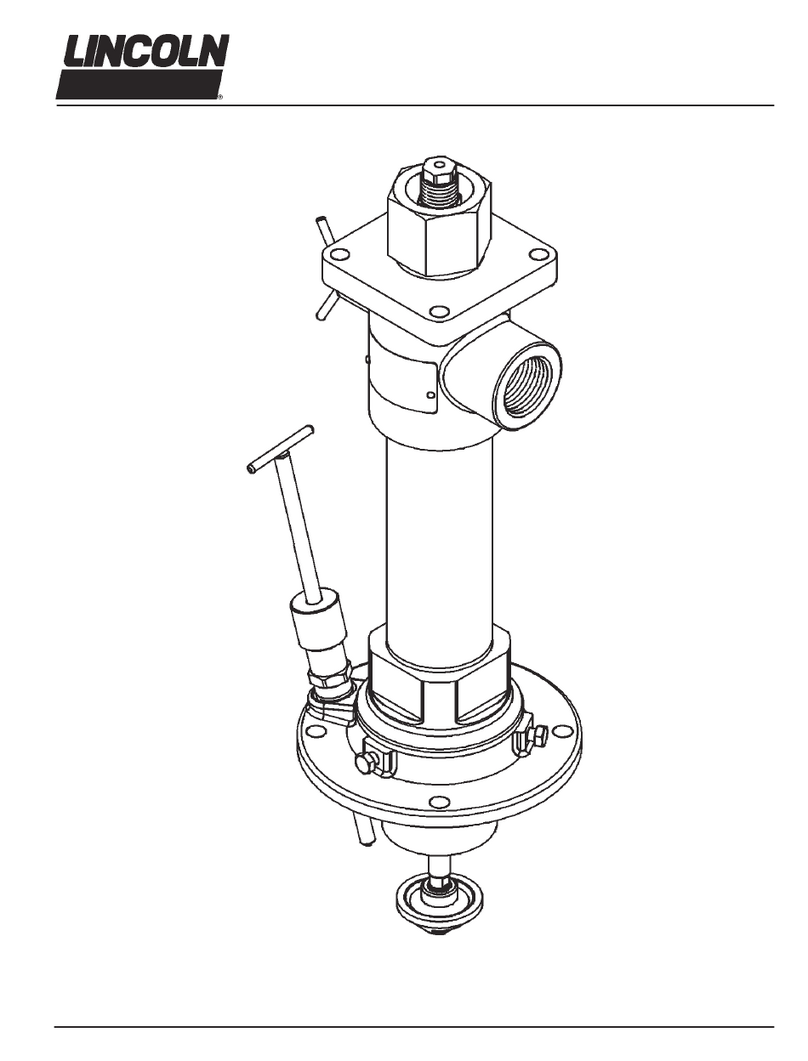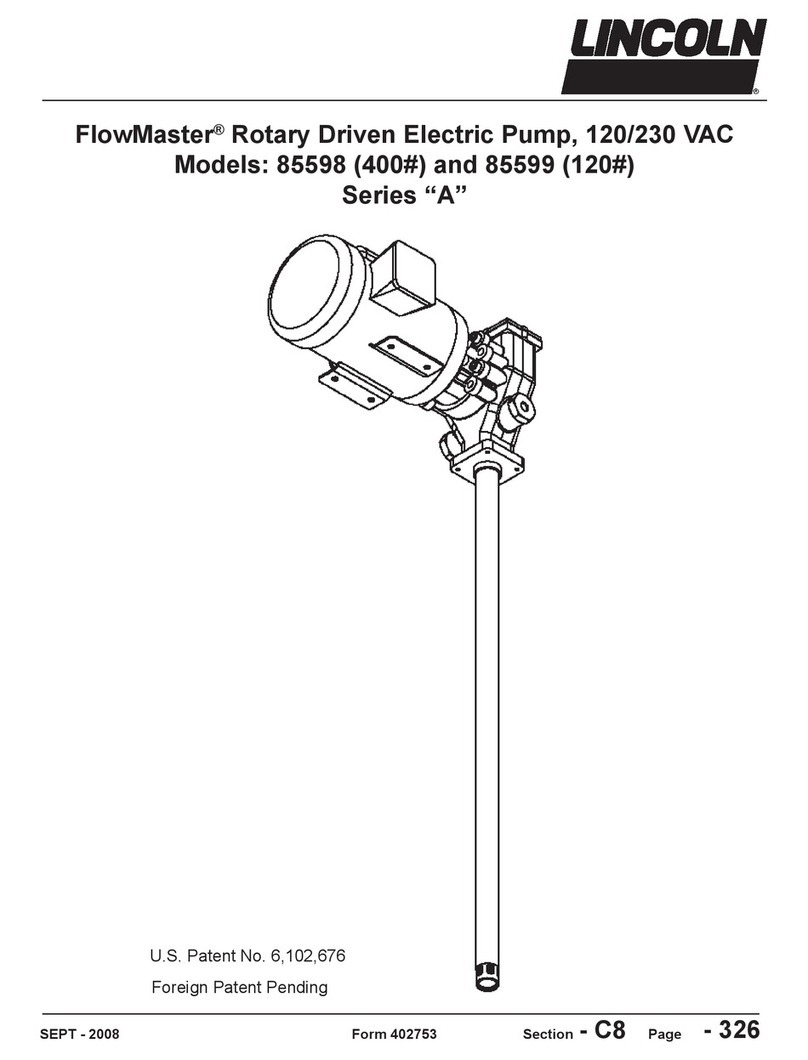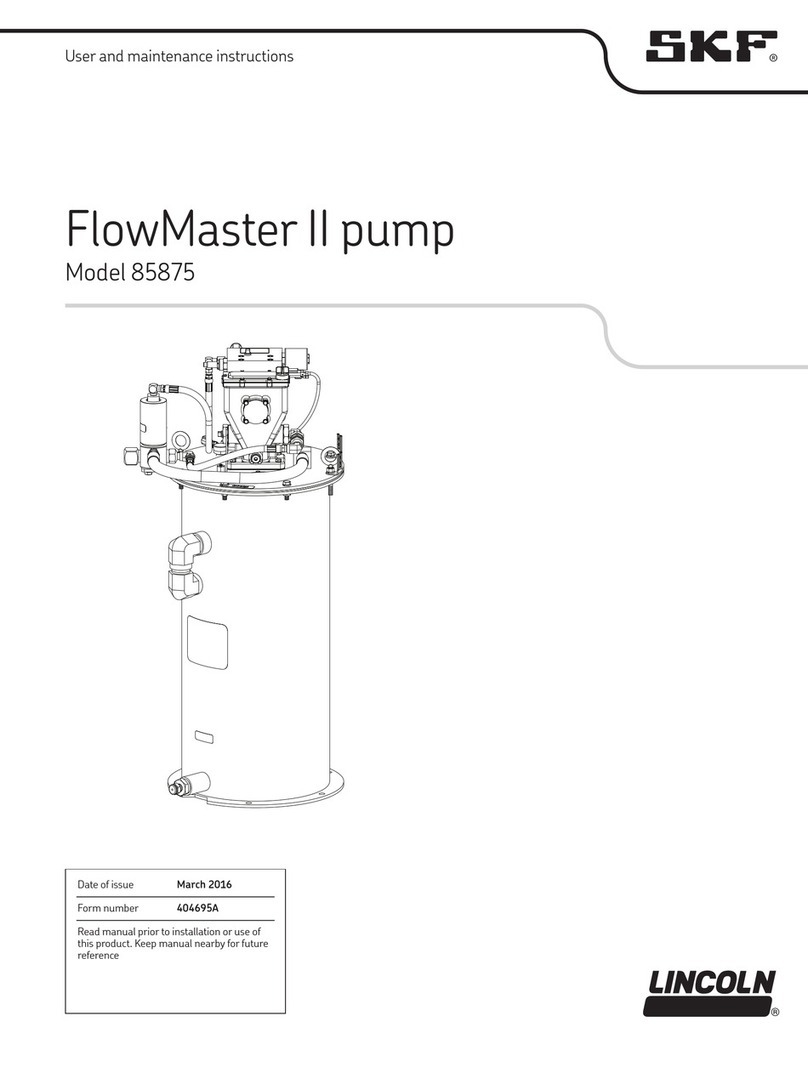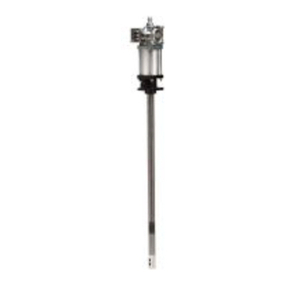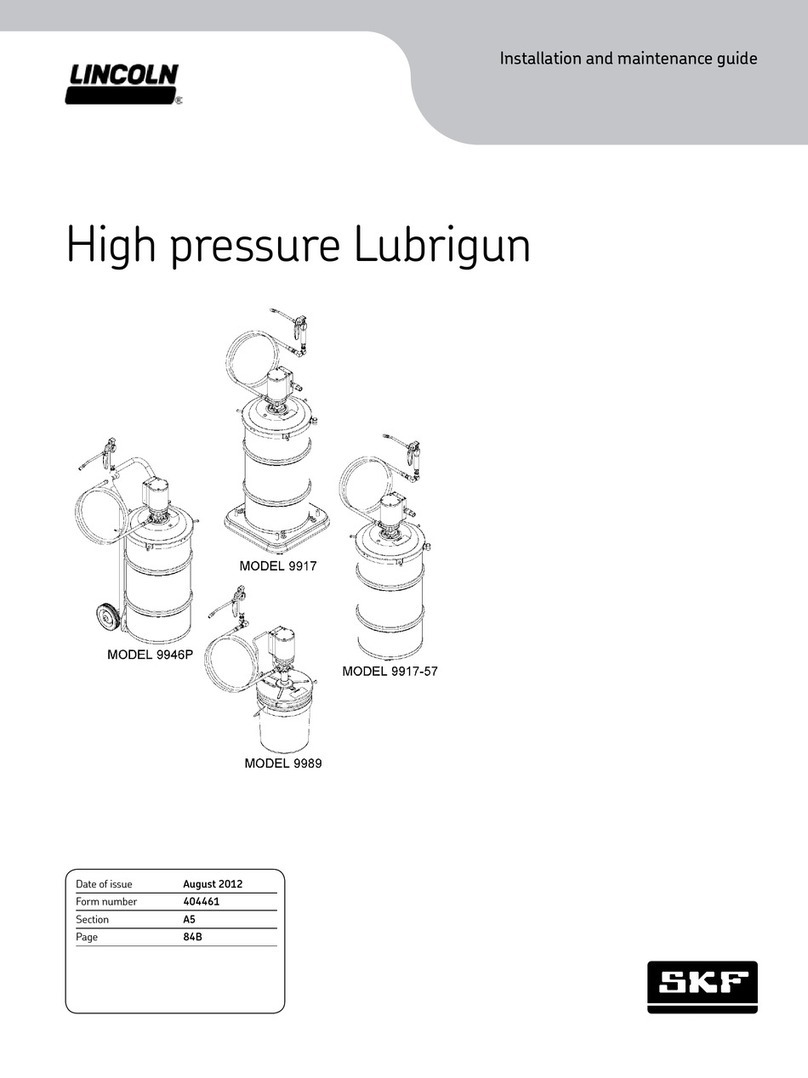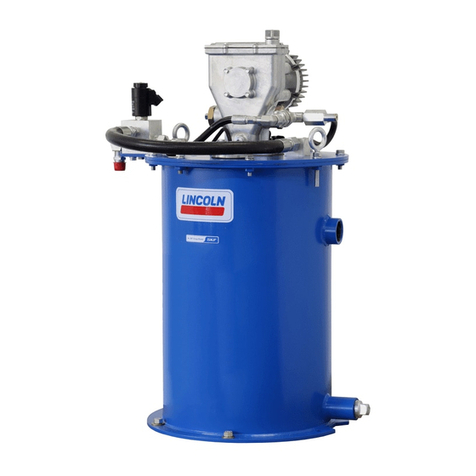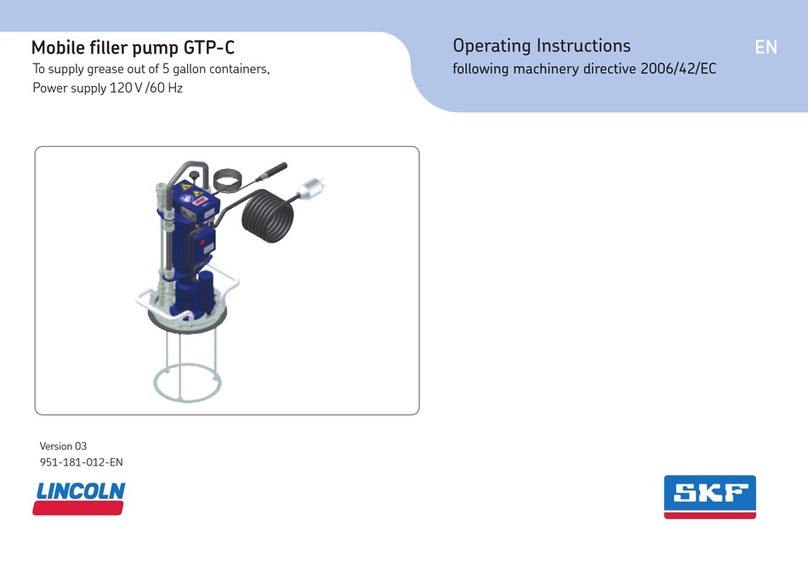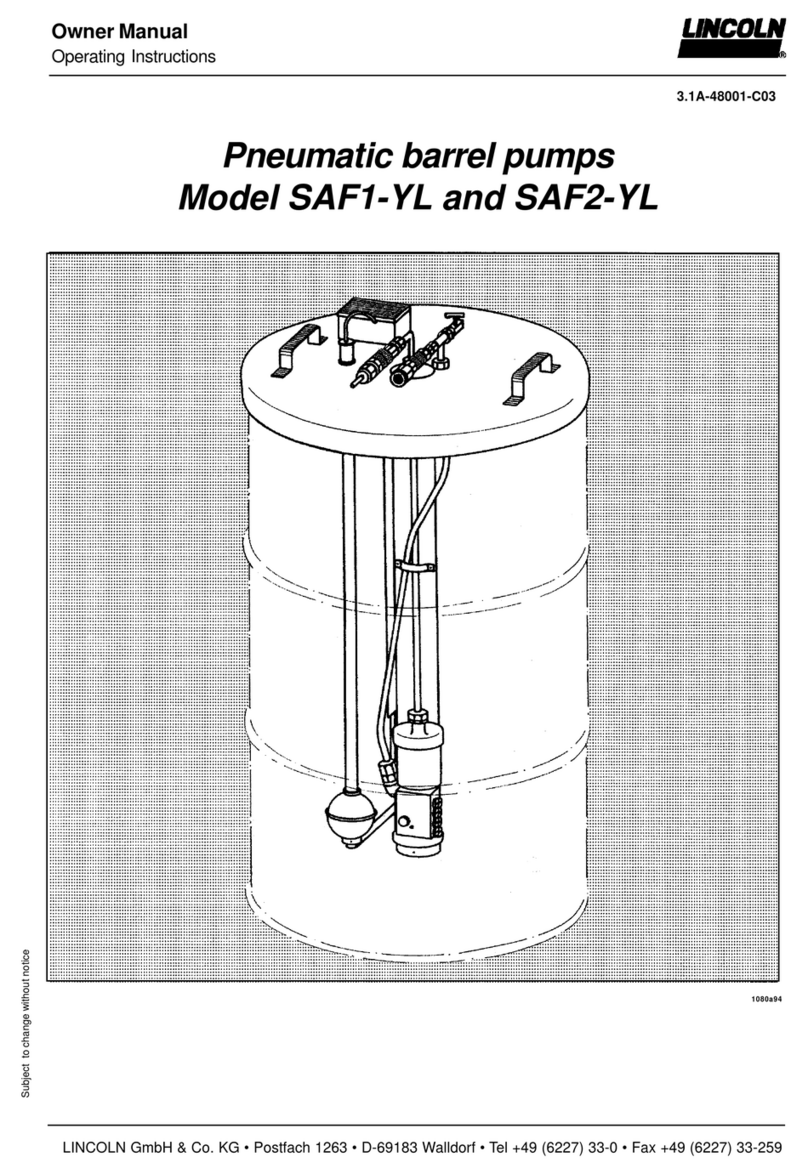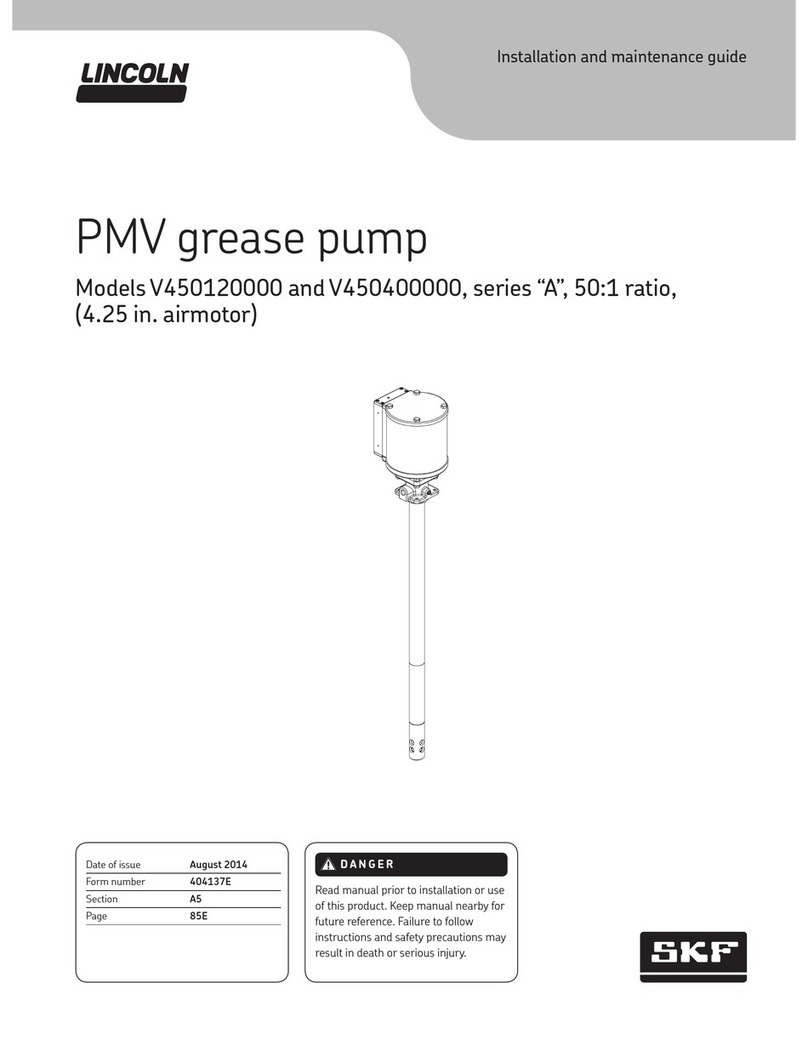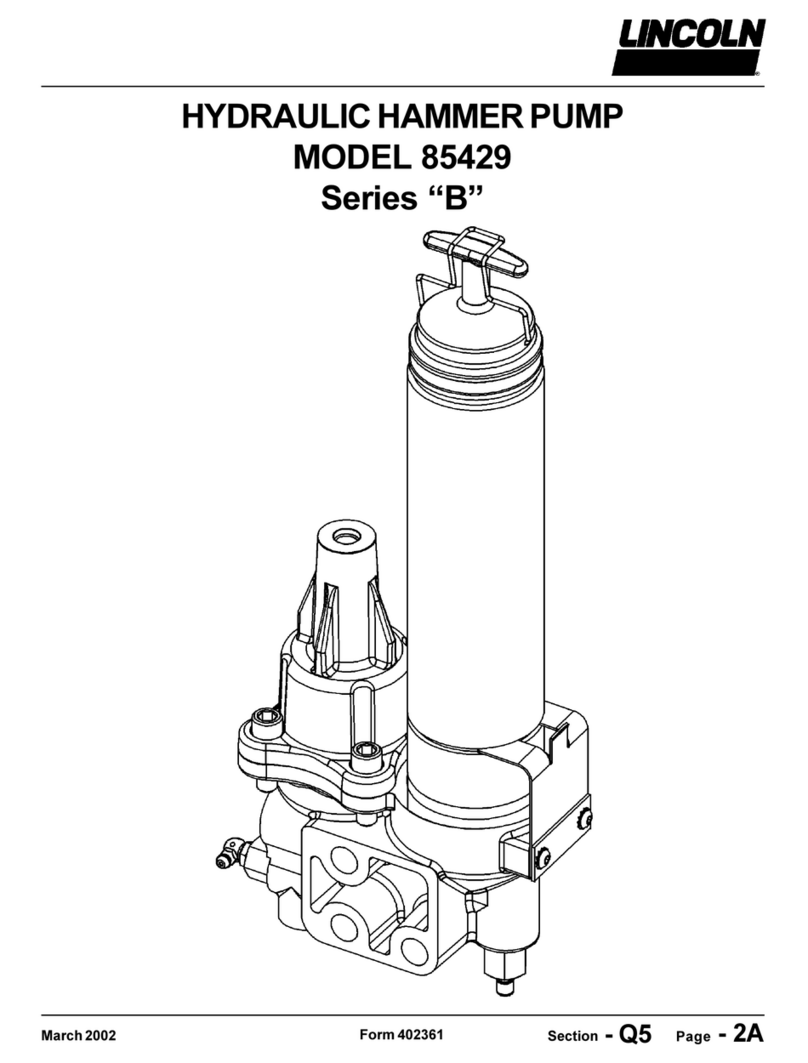
520-357-000 7/03 Page 5
PRINCIPLE OF PUMP OPERATION
This ball type check valve pump is
poweredbycompressed airandis a1:1
ratio design. The inner side of one
diaphragm chamber is alternately
pressurized while simultaneously
exhaustingtheotherinnerchamber.This
causes the diaphragms, which are
connected by a common rod secured
by plates to the centers of the
diaphragms,to move ina reciprocating
action.(Asone diaphragmperformsthe
discharge stroke the other diaphragm
is pulled to perform the suction stroke
in the opposite chamber.) Air pressure
is applied over the entire inner surface
of the diaphragm while liquid is
dischargedfromtheoppositeside ofthe
diaphragm.The diaphragmoperates in
a balanced condition during the
dischargestrokewhichallows thepump
tobe operatedat discharge headsover
200feet (61 meters)of water.
For maximum diaphragm life, keep
the pump as close to the liquid being
pumped as possible. Positive suction
headinexcessof 10feetofliquid(3.048
meters) may require a back pressure
regulating device to maximize
diaphragmlife.
Alternate pressurizing and
exhausting of the diaphragm chamber
isperformed byanexternally mounted,
pilot operated, four way spool type air
distributionvalve.When thespool shifts
to one end of the valve body, inlet
pressure is applied to one diaphragm
chamber and the other diaphragm
chamber exhausts. When the spool
shifts to the opposite end of the valve
body, the pressure to the chambers is
reversed.Theairdistribution valvespool
is moved by a internal pilot valve which
alternately pressurizes one end of the
air distribution valve spool while
exhaustingtheotherend. Thepilotvalve
is shifted at each end of the diaphragm
stroke when a actuator plunger is
contacted by the diaphragm plate. This
actuatorplunger thenpushes theend of
the pilot valve spool into position to
activatethe airdistribution valve.
The chambers are connected with
manifolds with a suction and discharge
check valve for each chamber,
maintainingflowinone directionthrough
thepump.
INSTALLATION AND START-UP
Locate the pump as close to the
productbeingpumpedaspossible.Keep
the suction line length and number of
fittingsto aminimum. Do notreduce the
suctionline diameter.
Forinstallations of rigidpiping, short
sections of flexible hose should be
installed between the pump and the
piping. The flexible hose reduces
vibration and strain to the pumping
system. A surge suppressor is
recommendedtofurtherreducepulsation
inflow.
Insystemswherea closeddischarge
mayoccur,thermalexpansionofthefluid
can cause a hazardous, high-pressure
condition. To prevent damage to
equipment and or personnel, place a
pressurerelief valve in thesystem.The
pressure relief valve should be set to
relievepressure inthe systemat150psi
andthereliefvalveshouldbelocatednear
outletof the pump. (Seerecommended
installationdrawing onpage#6.)
AIR SUPPLY
Air supply pressure cannot exceed
125psi (8.6 bar). Connect the pump air
inlettoanairsupplyofsufficientcapacity
and pressure required for desired
performance. When the air supply line
is solid piping, use a short length of
flexible hose not less than ½" (13mm)
in diameter between the pump and the
pipingtoreducestraintothepiping. The
weight of the air supply line, regulators
and filters must be supported by some
meansotherthantheairinletcap.Failure
to provide support for the piping may
resultindamagetothepump.Apressure
regulating valve should be installed to
insure air supply pressure does not
exceedrecommended limits.
AIR VALVE LUBRICATION
Theairdistributionvalve andthepilot
valvearedesignedtooperateWITHOUT
lubrication.Thisis thepreferredmode of
operation. There may be instances of
personal preference or poor quality air
supplies when lubrication of the
compressed air supply is required. The
pump air system will operate with
properly lubricated compressed air
supply. Proper lubrication requires the
useof an airline lubricator setto deliver
onedropof SAE10non-detergent oilfor
every20SCFM (9.4liters/sec.)ofairthe
pumpconsumesatthepointofoperation.
Consult the pump’s published
PerformanceCurve todetermine this.
AIR LINE MOISTURE
Water in the compressed air supply
can create problems such as icing or
freezing of the exhaust air, causing the
pump to cycle erratically or stop
operating. Water in the air supply can
be reduced by using a point-of-use air
dryertosupplement theuser’s airdrying
equipment. This device removes water
from the compressed air supply and
alleviatestheicing orfreezingproblems.
AIR INLET AND PRIMING
To startthe pump,openthe airvalve
approximately ½ to ¾ turn. After the
pumpprimes,theairvalvecanbeopened
toincreaseairflowas desired.Ifopening
thevalveincreasescyclingrate,butdoes
not increase the rate of flow, cavitation
hasoccurred.Thevalveshouldbeclosed
slightly to obtain the most efficient air
flowto pump flow ratio.
BETWEEN USES
Whenthepumpisused formaterials
that tend to settle out or solidify when
notinmotion,thepumpshouldbeflushed




















